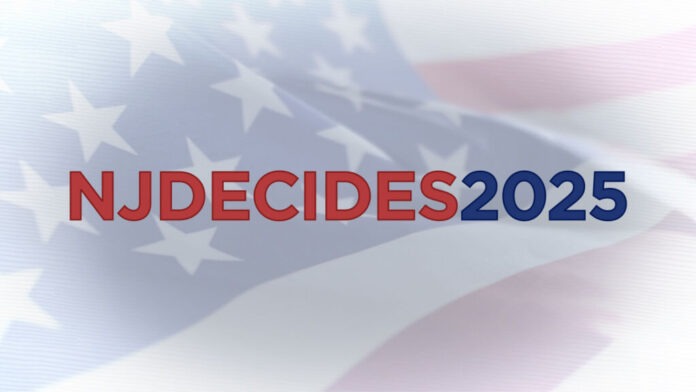As New Jersey moves closer to the pivotal 2025 gubernatorial and General Assembly elections, the state’s political atmosphere is heating up. With Governor Phil Murphy approaching the end of his final term, new leadership is on the horizon, and the stakes have rarely been higher. The race for governor has quickly become one of the most closely watched in the country, pitting two powerful figures — Democratic nominee and U.S. Representative Mikie Sherrill against Republican candidate Jack Ciattarelli — in a contest defined by contrasting visions for New Jersey’s future.
The campaign has grown increasingly intense as Election Day approaches. Sherrill and Ciattarelli have faced off in debates that highlight some of the state’s most pressing challenges, including energy costs, the opioid crisis, and health policy. During one heated exchange, Sherrill criticized Ciattarelli’s past ownership of a medical publishing firm that distributed information about prescription opioids, a claim that prompted Ciattarelli to file a defamation lawsuit, calling her comments “a step too far.” Both candidates have since used the controversy to rally supporters and sharpen their campaign messages.
The two nominees also diverge sharply on vaccination policies. Sherrill advocates for strict adherence to federal vaccine recommendations, while Ciattarelli supports expanding parental opt-outs, framing it as a matter of personal freedom and medical choice. Fundraising figures further underscore their contrasting bases of support: Sherrill has leveraged her national political connections to maintain a broad financial advantage, while Ciattarelli has found strength in local contributions from New Jersey residents, emphasizing his grassroots credibility.
Governor Murphy’s final months in office are also shaping the conversation. His administration has prioritized public health collaboration and clean energy initiatives, but those same policies have become points of contention. Rising utility costs and debates over renewable energy investments have drawn criticism from Republicans, who argue that Murphy’s energy goals have come at the expense of affordability. Ciattarelli has used this issue to connect with working- and middle-class voters, pointing to neighboring Pennsylvania as a model for more balanced energy policy.
Meanwhile, economic concerns remain front and center across the state. New Jersey’s affordability crisis — marked by high grocery prices, escalating housing costs, and steep property taxes — is resonating with voters in every county. Both parties are working to position themselves as the solution to the financial pressures affecting everyday families.
Beyond the governor’s race, all 80 seats in the New Jersey General Assembly will be on the ballot this November. These elections are historic for another reason: they mark the first contests since a federal court struck down the state’s long-standing “county line” ballot design. Without that party-aligned structure, more competitive races are emerging, though party-endorsed candidates still dominated most primary contests. Democrats currently control the Assembly by a 52–28 margin, but both parties see an opportunity to reshape the balance of power in 2025.
Adding to the complexity of the political environment, national issues are filtering into local debates. The ongoing federal government shutdown has put key infrastructure projects, including the vital Hudson River rail tunnel, at risk. Airport officials at Newark, JFK, and LaGuardia made headlines when they refused to play a politically charged video blaming Democrats for the shutdown — a move that drew mixed reactions but reflected New Jersey’s commitment to separating governance from political theater.
Ciattarelli, meanwhile, continues to push an unconventional campaign message focused on “overdevelopment” and suburban preservation. While most candidates across the country discuss housing shortages, Ciattarelli argues that New Jersey — already the most densely populated state in the U.S. — faces the opposite problem. He opposes the state’s affordable housing mandates, claiming they lead to the destruction of green space, local flooding, higher property taxes, and congestion. His message has resonated with suburban voters concerned about preserving community character, even as housing advocates push back, citing the state’s growing affordability gap.
The Republican hopeful has been cautious about aligning too closely with national party figures, though former President Donald Trump endorsed him during the primary. Ciattarelli has expressed appreciation for Trump’s support but has emphasized that the race will ultimately be decided by New Jersey voters — not outside influences. His Democratic opponent, Sherrill, has embraced national surrogates but has focused her campaign messaging on local issues such as healthcare access, women’s rights, and public safety.
As the race enters its final weeks, both campaigns are mobilizing their bases. Republicans have been quick to highlight growing enthusiasm among mail-in voters, though Democrats maintain a significant overall lead in ballot requests and returns. Political analysts say the contest reflects New Jersey’s broader identity — a state deeply engaged, politically diverse, and unafraid to debate the issues that define its future.
From affordability and infrastructure to clean energy and community preservation, the 2025 elections are about more than party lines — they represent a turning point in how New Jersey defines its priorities for the decade ahead. Voters will soon decide which vision for the Garden State’s future will take root.
For continuing coverage of New Jersey’s political landscape and election updates, visit Explore New Jersey Politics.











